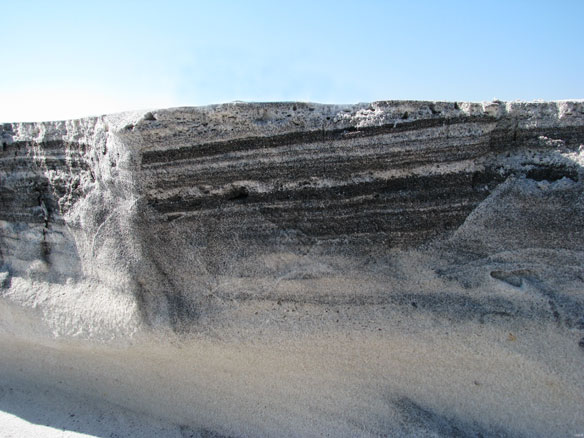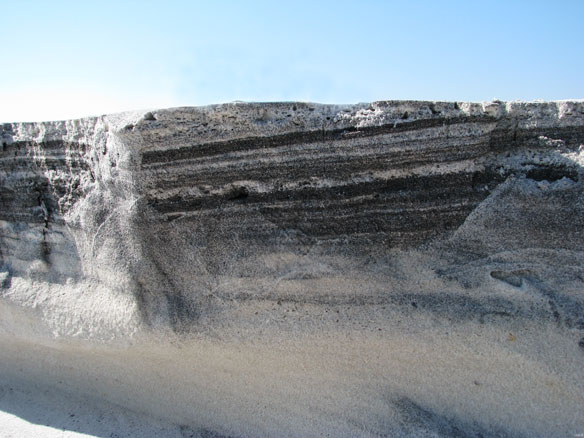
Oiled sediment. This photo shows the swash zone at USGS sampling location MS-39 on East Ship Island, MS. Waves have cut a steep section into the sand, revealing alternating layers of clean and sticky organic-rich sand that are visible after low tide. (The swash zone is the zone that is alternately covered and exposed by waves.) Captions and Photo source: Shane Stocks / USGS
Excerpts;
Using advanced genomic identification techniques, researchers studying the impact of the Deepwater Horizon spill on communities of beach microbes saw a succession of organisms and identified population changes in specific organisms that marked the progress of the oil’s breakdown.
When oil from the Deepwater Horizon spill first began washing ashore on Pensacola Municipal Beach in June 2010, populations of sensitive microorganisms, including those that capture sunlight or fix nitrogen from the air, began to decline. At the same time, organisms able to digest light components of the oil began to multiply, starting the process of converting the pollutant to carbon dioxide and biomass…









